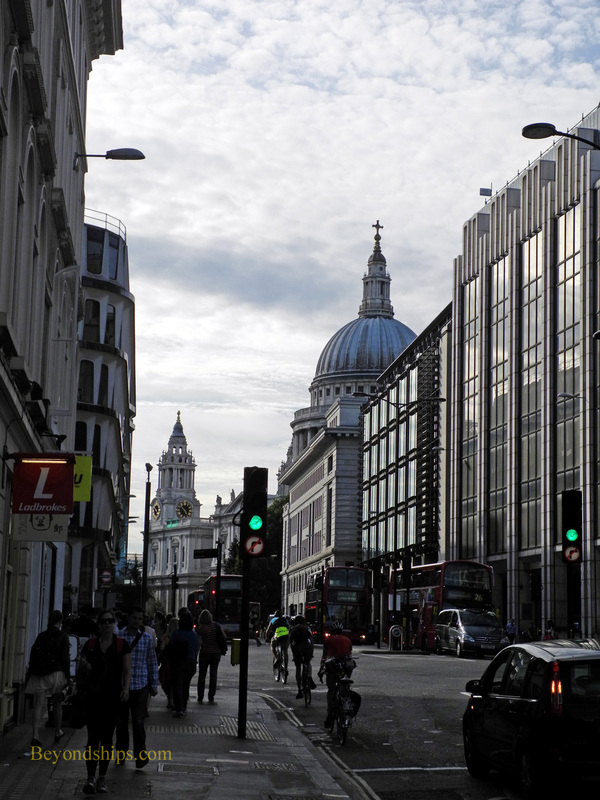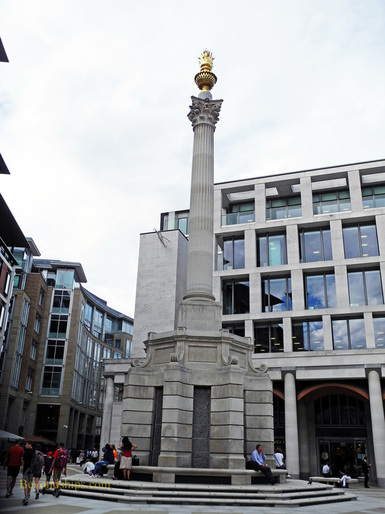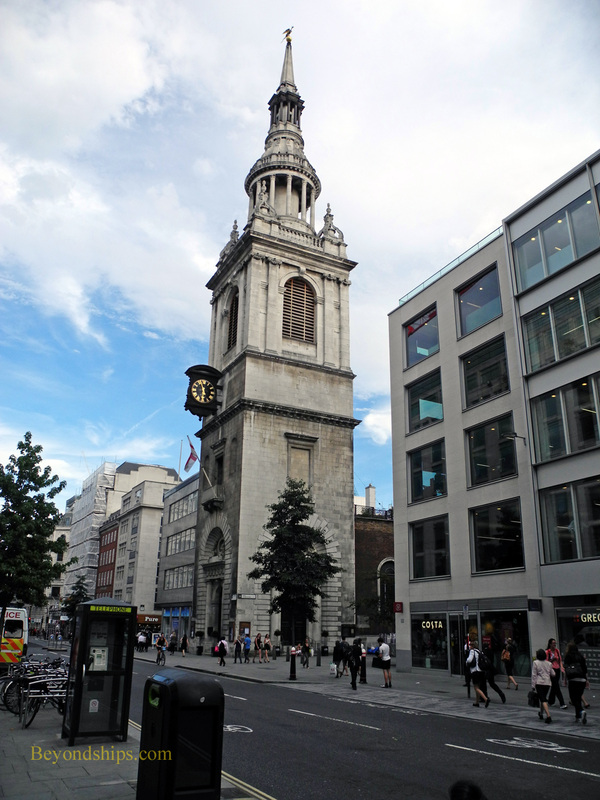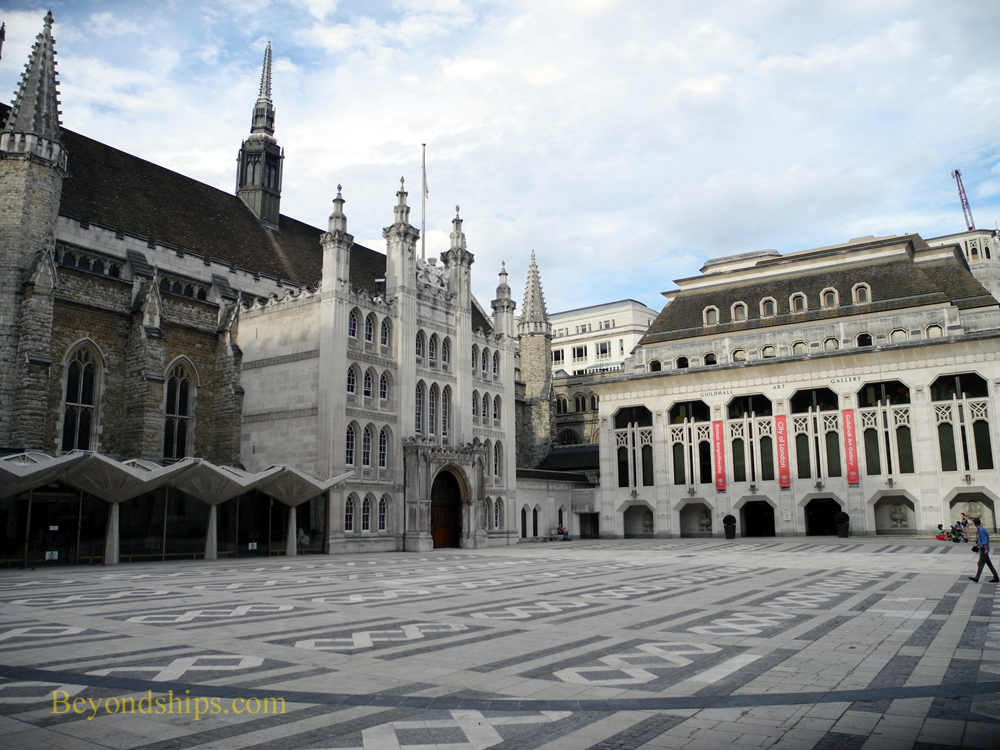Another WorldOn the northern side of St. Paul's, you find a gate that looks something like a Roman triumphal arch. This is the Temple Bar.
The gate was not always in this location. Over the centuries, the City outgrew its ancient Roman walls and assumed control over certain adjacent areas. One of these was the Temple, where the two inns of court mentioned earlier are located. To regulate trade between the City and greater London, the City authorities established checkpoints called bars along the roads leading to the City. The most famous of these was Temple Bar which lay on the street going between the political center of Westminster and the City. Designed by Sir Christopher Wrenn, the gate we see today was put in place in 1672. However, by the 19th century, it had become a hindrance to traffic. In 1878, it was dismantled and eventually moved to the grounds of a private estate. There it stood until 2003, when it was moved to its present location. Walking through the gate you enter Paternoster Square. This is an entirely different world, one of the 21st century. The square is made up of modern buildings, one of which has housed the London Sock Exchange since 2007. Its color scheme and materials were designed to harmonize with St. Paul's but it somehow lacks the humanity of its neighbor. |
Above: Temple Bar.
Below: Paternoster Square. |
Bells and GovernmentWalking east along Cheapside (the name of the street), you pass the church of St. Mary-le-Bow. Traditionally, in order to be a true Cockney, you had to have been born within earshot of Bow Bells. Today, this is no longer a residential area and so the Cockneys have migrated to the East End and other parts of the Home Counties.
In addition, according to legend, Dick Whittington, a poor servant boy, was persuaded to return es to London after running away when he heard the Bow Bells calling “Dick Whittington, thrice Lord Mayor of London.” He then made a fortune and did indeed become Lord Mayor. In fact, in the 14th century, there was a merchant, politician and philanthropist named Richard Whittington who did become Lord Mayor four times. The charitable trust he established still continues to assist the needy. Speaking of the office of Lord Mayor, just a little way to the north is the Guildhall, the seat of the government of the City of London. As mentioned earlier, the City is governed by the City of London Corporation, an authority that is separate and apart from the authorities that govern the rest of the metropolis. Indeed, the City even has its own separate police force. The system of government in the City seems like it was designed to confuse. At the head of the government is the Lord Mayor, which is an entirely different position than the Mayor of London. He or she presides over the City's two chamber legislative body, the Court of Aldermen and the Court of Common Council. As chief magistrate of the City, the Lord Mayor is entitled to sit on the bench during trails at the Old Bailey and the judges there always sit so as to leave room on the bench for the Lord Mayor should he decide to exercise this right. However, the Lord Mayor's main role is to promote U.K. business and financial services. This is done mostly giving speeches and by hosting banquets and ceremonies. The actual administration of the government is headed by the Town Clerk. |
The Guildhall was begun in 1411 and has been added to and restored over the centuries. An addition in the 1990s was the Guild Hall Art Gallery. Most of the administrative work for the City is done in neighboring modern buildings but the Guild Hall is still used for ceremonies.
Above: St. Mary-le-Bow is known for the Bow Bells.
Below: The Guildhall is the governmental center of the City. |
Cruise destination - England - A Walk Across the City of London - page 2




